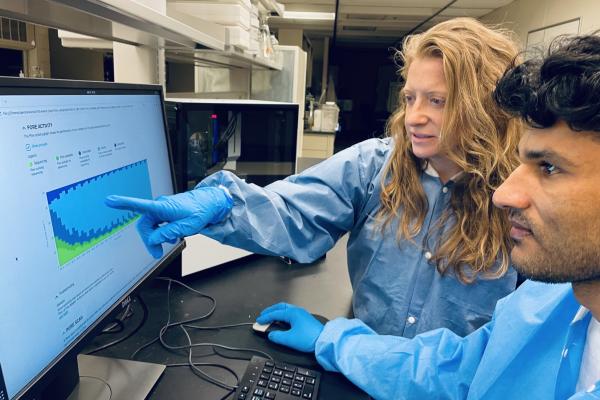Newly funded: Enhancing MRI methods to better understand disc health, risk of future herniation in dogs
June 28, 2021

Did you know up to 60 percent of dachshunds experience disc herniation caused by intervertebral disc degeneration (IVDD)?
IVDD is caused by the degradation of the spinal discs that act as a cushion between vertebrae. The condition can lead to chronic pain, partial paralysis, urinary and fecal incontinence, and, in some cases, death. IVDD is most common among short-legged breeds, for whom the condition generally arrives early in life.
While modern techniques for diagnosing a herniated disc are well established, those techniques aren’t good at determining whether the issue is acute or chronic, or whether non-herniated discs might protrude in the future.
A team of University of Minnesota researchers in the College of Veterinary Medicine hopes to fix that. The team, led by magnetic resonance imaging (MRI) expert Casey Johnson, PhD, has received an internal award of $100,000 to investigate advanced, quantitative MRI methods in intervertebral discs in dogs.
The team will expand on previous work with quantitative MRI in humans to measure biochemical and biomechanical properties of discs in canines. Some of the quantitative methods have not been evaluated in dogs with IVDD—a critical gap in canine medicine literature the researchers hope to fill. The findings would allow veterinary professionals to assess the risk of future disc degeneration before it occurs, and empower dog owners to look for potential symptoms of IVDD. That would mean improved overall assessment of spinal disc health.
The work has relevance for another species: The condition and its symptoms are similar between dogs and humans, providing an opportunity to translate imaging methods, treatments, and understanding of the disease at the intersection of animal and human health.
Funding for the project began this month and continues through May 2023.


